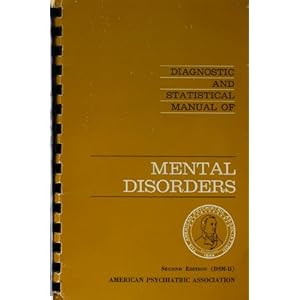Psychology is largely to blame for the pathologization of homosexuality. The inclusion of homosexuality in the Diagnostic Statistical Manual (DSM) as a Sexual Deviation served to put homosexuals in the same category as Pedophiles and served to justify societies distain (and even hatred!) toward sexual interests that deviated from the heterosexual norm. It was until the DSM-III-R that homosexuality was fully removed. While the disorder listed in the DSM-III, “Ego-dystonic Homosexuality” is certainly an improvement upon what is listed in the DSM-II, “Sexual Deviations,” it still rings of homophobia. Below you will see two excerpts, one form the DSM-II and another from DSM-III.
DSM-II:
“302 Sexual deviations
This category is for individuals whose sexual interests are directed primarily toward objects other than people of the opposite sex, toward sexual acts not usually associated with coitus, or toward coitus performed under bizarre circumstances as in necrophilia, pedophilia, sexual sadism, and fetishism. Even though many find their practices distasteful, they remain unable to substitute normal sexual behavior for them. This diagnosis is not appropriate for individuals who perform deviant sexual acts because normal sexual objects are not available to them
302.0 Homosexuality
302.1 Fetishism
302.2 Pedophilia
302.3 Transvestitism
302.4 Exhibitionism
302.5 Voyeurism
302.6 Sadism
302.7 Masochism
302.8 Other sexual deviation
[302.9 Unspecified sexual deviation]”
DSM-III
“302.00 Ego-dystonic Homosexuality
The essential features are a desire to acquire or increase heterosexual arousal, so that heterosexual relationships can be initiated or maintained, and a sustained pattern of overt homosexual arousal that the individual explicitly states has been unwanted and a persistent source of distress.
This category is reserved for those homosexuals for whom changing sexual orientations is a persistent concern, and should be avoided in cases where he desire to change sexual orientations may be a brief, temporary manifestation of an individual’s difficulty in adjusting to a new awareness of his or her homosexual impulses…
Diagnostic criteria for Ego-dystonic Homosexuality:
 A. The individual complain that heterosexual arousal is persistently absent or weak and significantly interferes with initiating or maintaining wanted heterosexual relationships.
A. The individual complain that heterosexual arousal is persistently absent or weak and significantly interferes with initiating or maintaining wanted heterosexual relationships. B. There is a sustained pattern of homosexual arousal that the individual explicitly states has been unwanted and a persistent source of distress.”
What are your thoughts on the shift of homosexuality from the DSM-II to the DSM-III?

